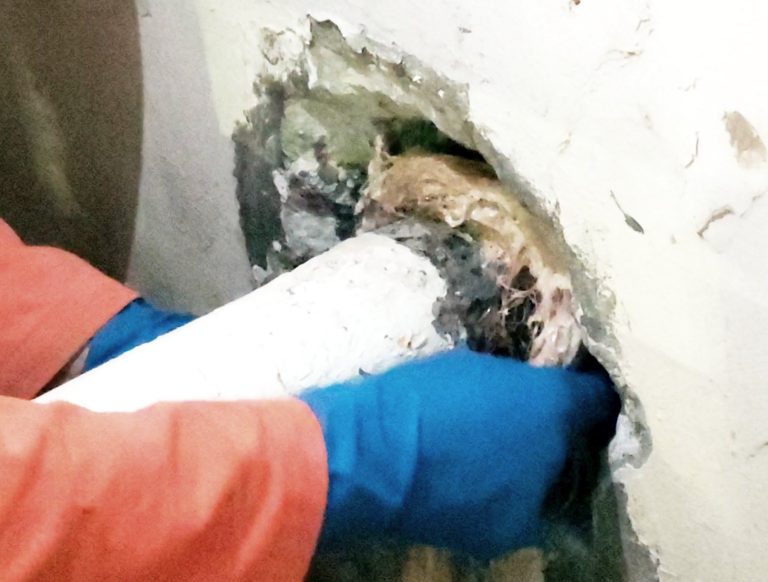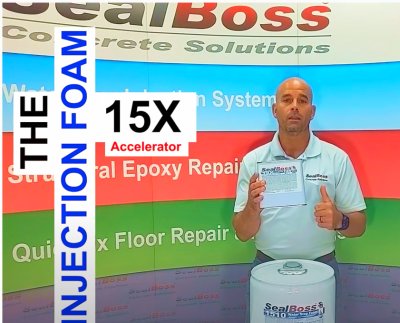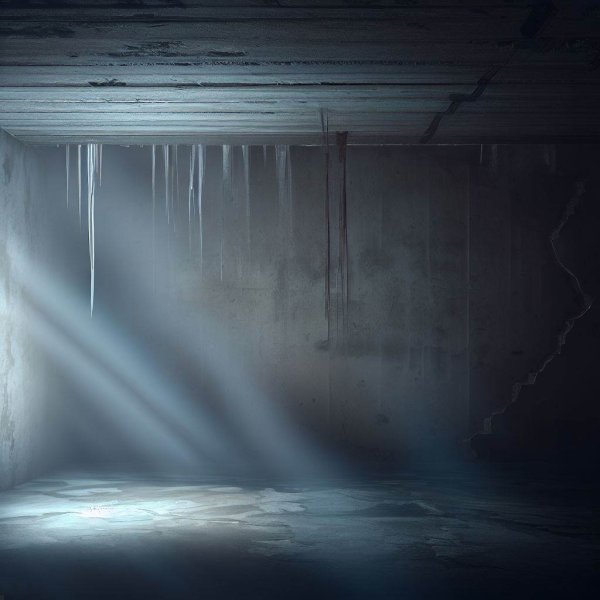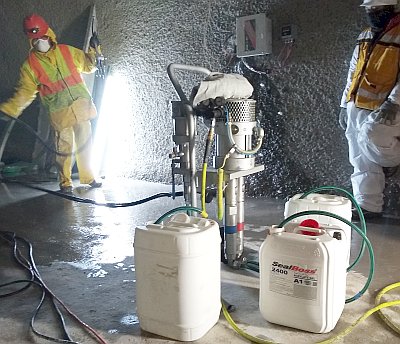Injection Tube System
Type 1 & Type 2
Grout Injection Hose System for Water Tight Cold Joints
The SealBoss Injection Tube System is designed for use in concrete structures which contain cold joints where a hydrostatic load on the face of the structure is expected. After injection it reliably prevents water seepage through construction joints in structures such as parking garages, stadiums, subways, tunnels, swimming pools, water reservoirs, locks, canals, dams, sewage treatment plants, water tanks and others.
SealBoss Inject Tube System Applications
- Cold Joints
- Expansion Joints
- New and Retrofit Construction
- Tunnels, Parking Garages, Slurry Walls, Pipe Joints
SealBoss Inject Tube System Competitive Advantages
- Waterproofing of cold joints – Injection of resin when leakage occurs or as preventive measure after total curing of the concrete
- Industry Leading Injection Tube Designs & Accessories
- SealBoss ® InjectTube Type 1 and Type 2 to suit specifications & application requirements
- SealBoss ® InjectTube Type 2 – Double membrane protects tube best from infiltration
- Deep penetration waterstop seal
- Will not fold or crush with concrete weight
- Can be injected under flowing water
- NSF potable water applications possible
- Injection of joints in different sections possible
- Easy installation with no damage to the concrete
- Competitively priced
- Very flexible tube system
- Composed of durable materials
- Re-injectable & double hose abilities
- Free of metal – No corrosion
The SealBoss ® Injection Tube System is an efficient and easy to install system to create water tight cold joints.
SealBoss InjectTube Type 2 offers a double woven membrane to best protect the inner tube space from water and debris infiltration prior to injection. A clean inner tube assures best product flow and injection results.
A well-known characteristic of concrete is shrinkage while curing. Stress caused during this time and temperature changes provoke the development of small cracks and fissures. Several design and reinforcement techniques help to control this effect, but cannot control them completely. Fine cracks of sometimes less than 0.1 mm are inevitable. These cracks are considered normal and generally do not cause any problems. However, at cold joints, the tendency to form larger cracks cannot be reduced. Since old and new concrete do not bond together homogeneously and do not form a monolithic concrete body, stress cracks concentrate mainly in these areas. They easily conduct water and may cause severe damage.
The SealBoss Injection Tube System for sealing cold joints utilizes the natural tendency of concrete to form cracks. A special tube system is installed at the joint where leaks are most likely to occur. The system allows resin injection directly into the joint through a protected porous tube after completion of the structure. The resin penetrates through the perforation of the tube and fills the cracks and voids of the cold joint area thereby sealing the structure. To be effective, the system must have certain properties. The tube must be sturdy enough to withstand the high pressure of placed concrete and it must resist concrete slurry penetration. On the other hand the injection resin must be able to penetrate the hose at a moderate injection pressure. The installation and injection process must be suitable for construction sites. The SealBoss Inject Tube System is designed to meet these requirements.
Before pouring the new concrete the tube shall be attached to the existing surface as tight as possible and usually towards the middle of the future cold joint using suitable clips or by attaching it to the existing rebars. It is crucial that the hose is tightly fixed in the center of the joint area so that it can neither move nor lift during the concrete placement. Six to twelve inches between clips are typically recommended. The hose must be placed in a manner that it will not touch the outside surface of the structure at any point. To allow sufficient injection pressures, the maximum length of injection tube should not exceed 30 feet.
 Product Description
Product Description
SB InjectTube 1 (1 Membrane)
The SealBoss ® InjectTube 1 for all SealBoss injection foams, gels and resins. Equipped with perforated PVC inner tube with holes, constructed to withstand pressures of freshly placed concrete. Covered by one woven membrane to protect the inner tube from the entry of cement particles (filter, membrane one) and abrasive effects of the concrete aggregates (protector, membrane two).
SB InjectTube 2 (2 Membranes)
The SealBoss ® InjectTube 2 for all SealBoss injection foams, gels and resins. Equipped with perforated PVC inner tube with holes, constructed to withstand pressures of freshly placed concrete. Covered by two woven membranes to protect the inner tube from the entry of cement particles (filter, membrane one) and abrasive effects of the concrete aggregates (protector, membrane two).
Installation Guidelines
The Injection Tube, with the adapted end sleeves, is to be fastened directly to the concrete surface or to existing rebar in a fashion that the tube has continuous contact with the surface. Sweep concrete to remove any material that may interfere with direct contact between the Tube and the surface. Position the Tube as required and use clips or rebar and wire to keep the Tube in place. Clips may be nailed or glued with epoxy a maximum of 12″ apart or as necessary to maintain consistent contact of the Tube with the concrete. Tension on the Tube must be sufficient as not to allow Tube to shift during concrete pour. Note: Continuous contact between Inject Tube and surface is essential for the system to work. Thorough preparation is the key to successful results.
If continuous lengths of cold joint are in excess of 30 feet (10 meters), two or more sections of Inject Tube have to be installed. Adjacent Injection Tube segments shall overlap 12 inches in tight contact to ensure continuous resin injection.
PVC Inject Sleeves shall be bent in a ninety degree angle before exiting the face of the concrete. The black colored connection piece must be embedded a minimum of 2″ inside concrete face to allow high injection pressures without any failure to the connection. End piece shall protrude past concrete face 1″ – 3″ to allow access for future resin injection. After stripping forms, PVC Inject Sleeves must remain clearly visible in order not to complicate or prohibit injection.
Injection
Inject Screws shall be attached to the Inject sleeves prior to injection. The quick release zerk coupler allows for easy connection to the pressure grout line. The injection with polyurethane grout shall be done after the concrete is cured and all the cold joints are set. Injection pressures may range between 10 to 1000 psi.
In case of water infiltration into the tube it might be useful to leave the distant end open for drainage purposes. Grout shall be injected under low pressure until it leaks out from the distant end of the tube thereby replacing the water. Immediately the opening should be closed with an Inject Screw and the injection process should continue. It is desired to see material penetrating from the cold joint as the injecting process progresses. Continued penetration of material from the injection end of the tube to the far end is a good indicator for complete injection but will not always be achieved. Reason may be extremely tight sections in the cold joint or sections of materials adhesion where resins cannot penetrate. In any case material consumption and injection pressures should be closely monitored as an indicator for material flow, injection progress and injection success.
The material to be injected can be of foaming and non-foaming nature. Foaming materials should not foam too fast to allow for full penetration through the tube and cold joint. The amount of accelerator added should be determined prior to any injection attempts. Most cold joints show minimal seepage and a fast setting foam may not be advised! Good results have also been achieved with non-foaming flexible LV resins.
Consumption of injection grout is determined by two factors. One: product consumption to fill the tube. This amount is very low at a rate of approximately one quart of material per 150 feet of tube. Two: Consumption to seal cold joint / joint. Thickness of the structure and joint width determine the amount of product needed. Altogether the total consumption of product in inject tube injection is similar to grout use by injection with packers.
Re-Injection
The SealBoss ® InjectTubes offer re-injection capability when used with an acrylate gel such as SealBoss ® 2400. The acrylate gel properties permit the tube to be flushed with simple clean water after injection as long as the product has not cured. SealBoss ® InjectTube 1 is favoured if re-injection is desired as the tube has one membrane. When done correctly, the initial injection of the tube should be sufficient and should not require re-injection. Re-injection and use of acrylate gels with injection tube are only recommended in certain specific applications and should be backed by a qualified engineer/specifier.
Please do not hesitate to call your SealBoss ® technical support line for help with the choice of the right material or any questions you might have with he installation of the SealBoss Injection Tube System.






























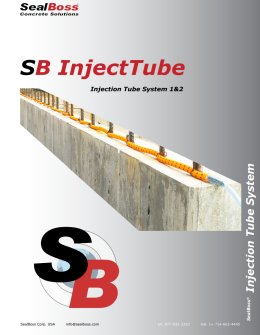
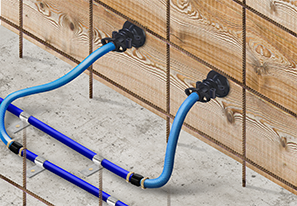 Product Description
Product Description